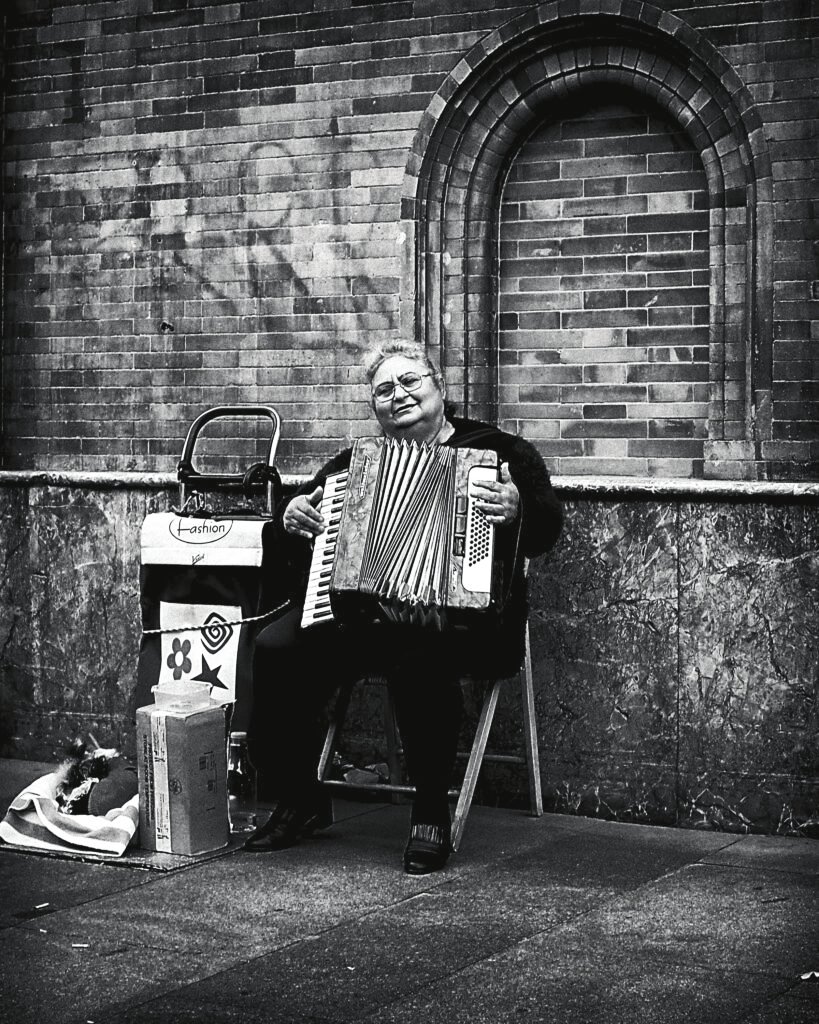
She sits just outside the Puerta de Jerez, back straight against a sandstone wall warmed by Andalusian sun, a woman of age and iron, hands curled around an old accordion that wheezes like an aging dove.
Her name is Doña Carmen, though few ask. Most just call her la señora del acordeón. She wears a faded shawl over her shoulders, hair pulled into a tight bun, silver streaks catching the light like threads of moon.
Her shoes are cracked. Her skirt, hand-mended. Her music? Unmistakably Seville—a blend of sorrow, sun, and defiant rhythm. She plays “La Llorona,” then “Besame Mucho,” then something older, wordless, aching. A song from her village. From a war. From a wedding long past.
Each note pulls air through the bellows like breath pulled from bone. Her eyes stay closed. Her fingers know the path without thought. Sometimes she hums along. Sometimes she weeps without tears.
She was married once. A guitarist named Miguel who sang boleros under orange trees. Cancer took him.
Music stayed. Now she plays alone, in the soft plaza shade, while tourists toss coins into her cracked black case. Some film her without asking. Some sit. Some forget.
But the locals know her. The baker brings her coffee. The florist offers wilting blooms at day’s end.
The children wave shyly as they pass. She nods to each—accordion never still, wringing old stories from its wheezing lungs.
At sunset, when the crowds thin and the air turns to gold, she plays her final song—a slow fandango Miguel once wrote for her. And for a moment, with the sound echoing between the stone and sky,
Doña Carmen becomes Seville itself—ancient, aching, and full of music that refuses to die.